Getting your cat and dog used to each other
The difference in body language between cats and dogs
Most animal lovers will be aware that cats and dogs communicate differently. When a dog wags its tail happily, it can put a cat on alert. This is because a whipping tail is a sign of aggression in communication between cats. This is just one of many examples of the different ways cats and dogs communicate.
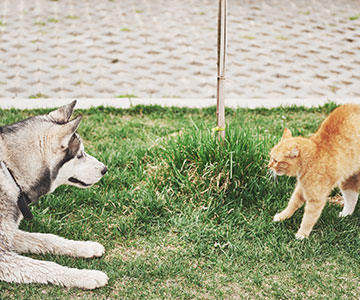 Getting a cat and a dog used to each other: differences in body language
Getting a cat and a dog used to each other: differences in body language
Getting your cat and dog used to each other: How it works
At the beginning of the relationship between the two four-legged friends, there should be a period in which they get to know each other in a controlled way. This is an important building block in getting the dog used to the cat and vice versa.
When is the best time to get your cat and dog used to each other?
When is the best time to get your cat and dog used to each other?
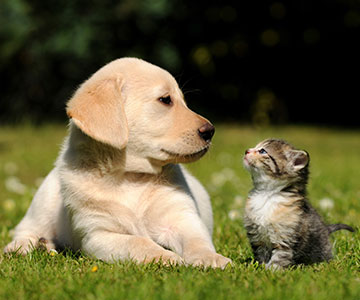 A cat and a dog will get to know each other best when they are young
A cat and a dog will get to know each other best when they are young
Tips for preparing the first meeting between a cat and a dog
It is especially important that there is no time pressure when you bring a cat and a dog together. The first meeting of the two pets in particular shapes their subsequent relationship and is crucial in determining how quickly the cat and the dog become accustomed to each other.
Getting a cat and a dog used to each other gradually
1. Getting a cat and a dog used to each other’s smell
It is advisable to give the newcomer a blanket or something similar to sleep on so that it takes on the smell of the animal. With the help of this blanket, your other pet can get used to the smell of the new arrival. You can also play a recording of barking or other dog noises to a cat before they get to know the dog, so that it is used to them.2. Carry out the first meeting between the cat and the dog in a controlled way
3. Keep a lead on the dog and provide a retreat for the cat
4. Limit the initial meetings
5. Repeat the meetings
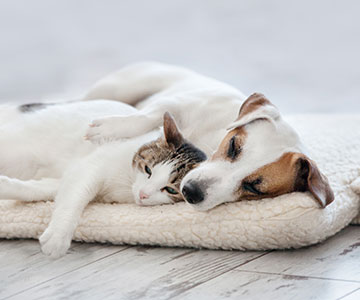 The cat and dog should be introduced to one another gradually
The cat and dog should be introduced to one another gradually
How long does it take to get cats and dogs used to each other?
Even if a cat and a dog have already become so used to each other that they can move around freely in a room under supervision, this does not necessarily mean that you can leave the animals alone at home. It is important that you do not increase the stakes too early, otherwise you can quickly go backwards at this stage. It can take several weeks before the animals can be left alone together.
More tips on how cats and dogs can live together
- Offer the cat a raised feeding place Unlike cats, dogs are scavengers and usually eat up their food completely. Cats, on the other hand, like to snack and eat their food more frequently and in smaller portions. Some cats divide their food up themselves throughout the day and therefore like to leave some in their bowl. To prevent your dog from eating the cat food, you should position it in such a way that it is only accessible to your cat. This also allows your cat to eat in a more relaxed way.
- Provide retreats for both cat and dog Cats love sleeping in places where they have a good view and which offer them a safe retreat. A tall scratching post or a climbing wall that leads up to a chest of drawers or a cupboard is suitable for this. At the same time, the dog’s basket should be out of bounds for the cat, so that it too has its own area as a place of retreat.
- Do not shut the cat and dog in We now know how important retreats are for both animals as they are getting to know each other and living together, so they should always be available to them. Locking a cat or dog in a box to give the other animal a “safe” free run is therefore not advisable. The cat might feel threatened and restricted, while the dog could feel it is competing with the cat.
Which first, cat or dog?
Since dogs are pack animals, it is usually easier if the dog is already living in the home and the cat is the new addition. As a rule, dogs are more open to new pack members than cats and they are easier to train. In contrast, cats are very sensitive, especially to changes in their everyday life and environment. They are also more sceptical of new family members and often see a dog as a threat to their own territory or are simply afraid of it.
Can you get any dog used to cats?
As already mentioned, the dog’s previous experience with cats plays a role. If your dog has often been put in its place by a neighbourhood cat, it is quite possible that it will generally be sceptical of felines and will adopt a defensive attitude. This can make it difficult to bring cats and dogs together.
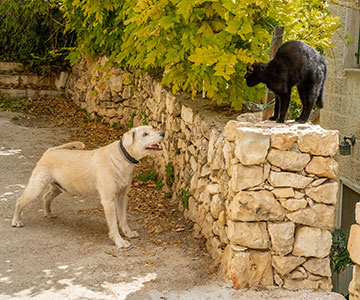 Previous experience plays a role in cat and dog integration
Previous experience plays a role in cat and dog integration
What if a cat and a dog cannot get used to each other?
The fact is that bringing cats and dogs together requires a lot of patience and time. As the pace varies, you have to rely on your instincts, as you know your animals best. If you are unsure whether it is possible for your cat and dog to live together, you can consult an animal behaviour therapist.
Product recommendations
Advantages of PLATINUM cat food
- PLATINUM stands for a transparent and simple declaration. Only what it says on the label is inside.
- PLATINUM is generally very well accepted by cats of all breeds and ages. Even cats with sensitive digestion or intolerances usually tolerate PLATINUM cat food well.
- Dry food for cats from the Freshmeatdryer is called MeatCrisp and has many valuable properties that benefit the cat's health. MeatCrisp is made from fresh meat alone and contains no meat meal or meat-and-bone meal.
- With 83 % fresh meat content in the dry cat food, PLATINUM places great value on a species-appropriate composition of the food.
- MeatCrisp also contains no gluten-containing cereals.
- In addition, our cat food does not contain any other attractants such as catnip and is still particularly tasty.



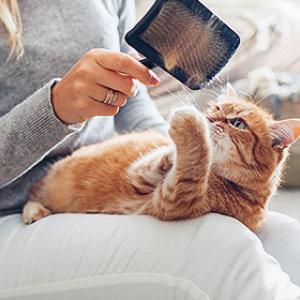
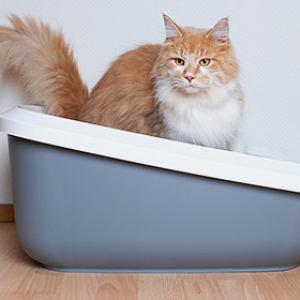


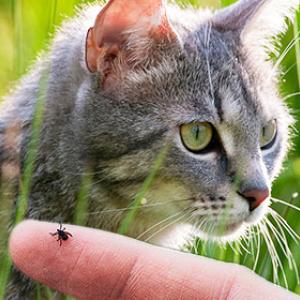

.png)
.png)
.png)